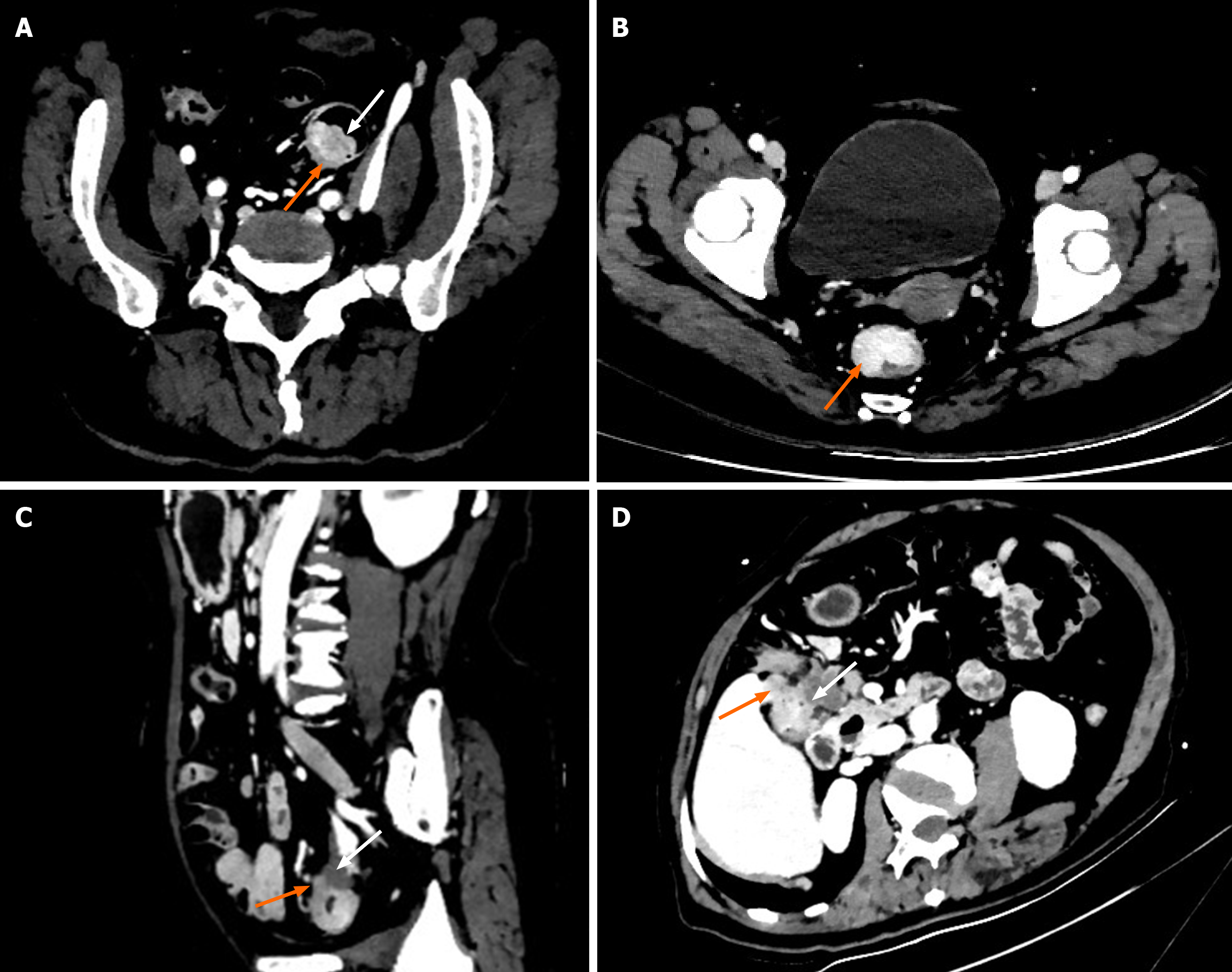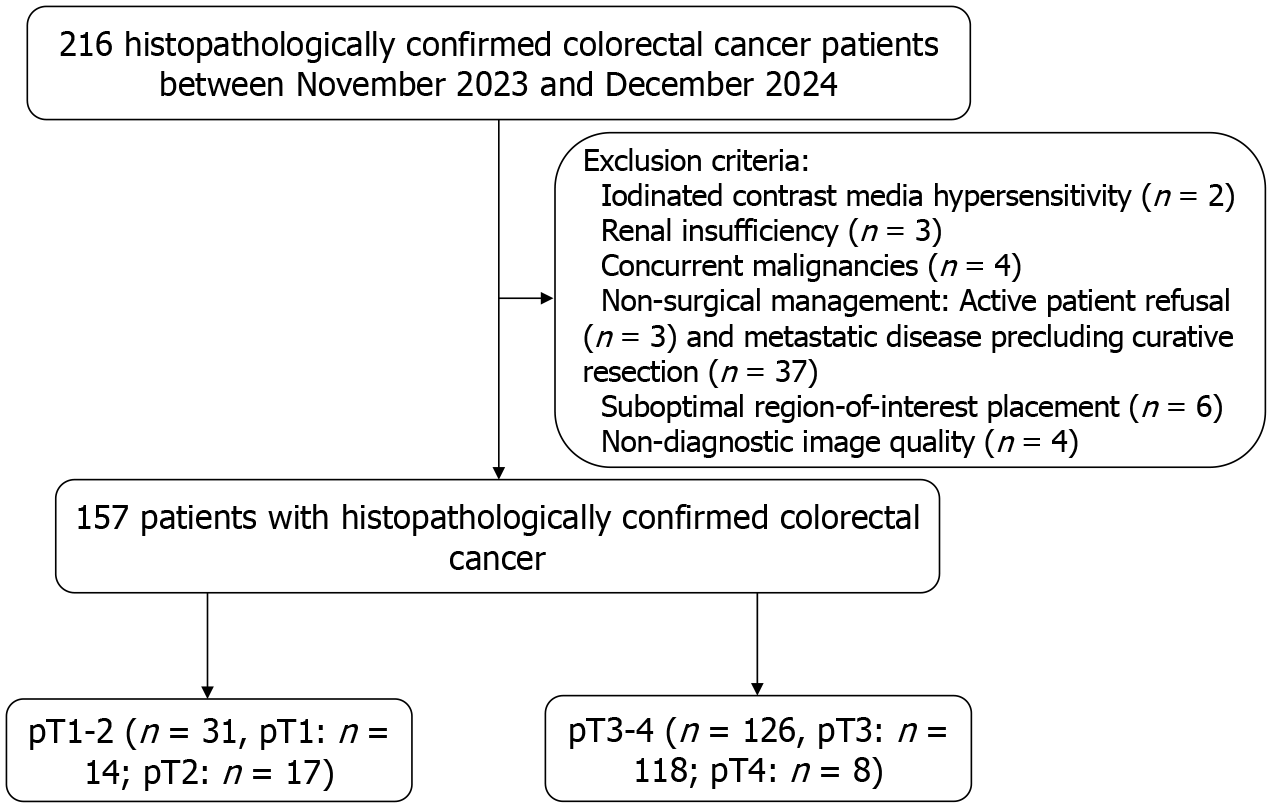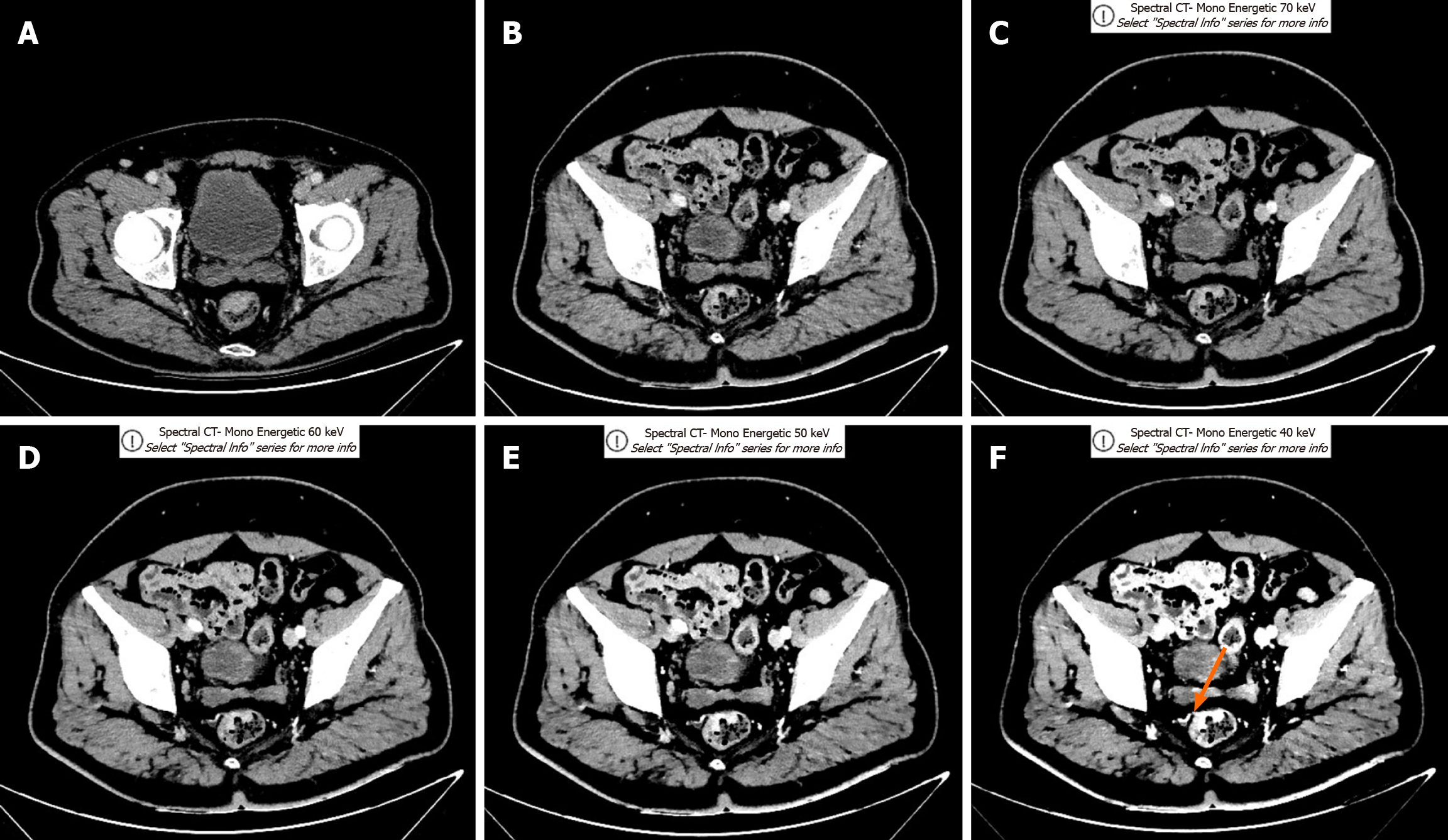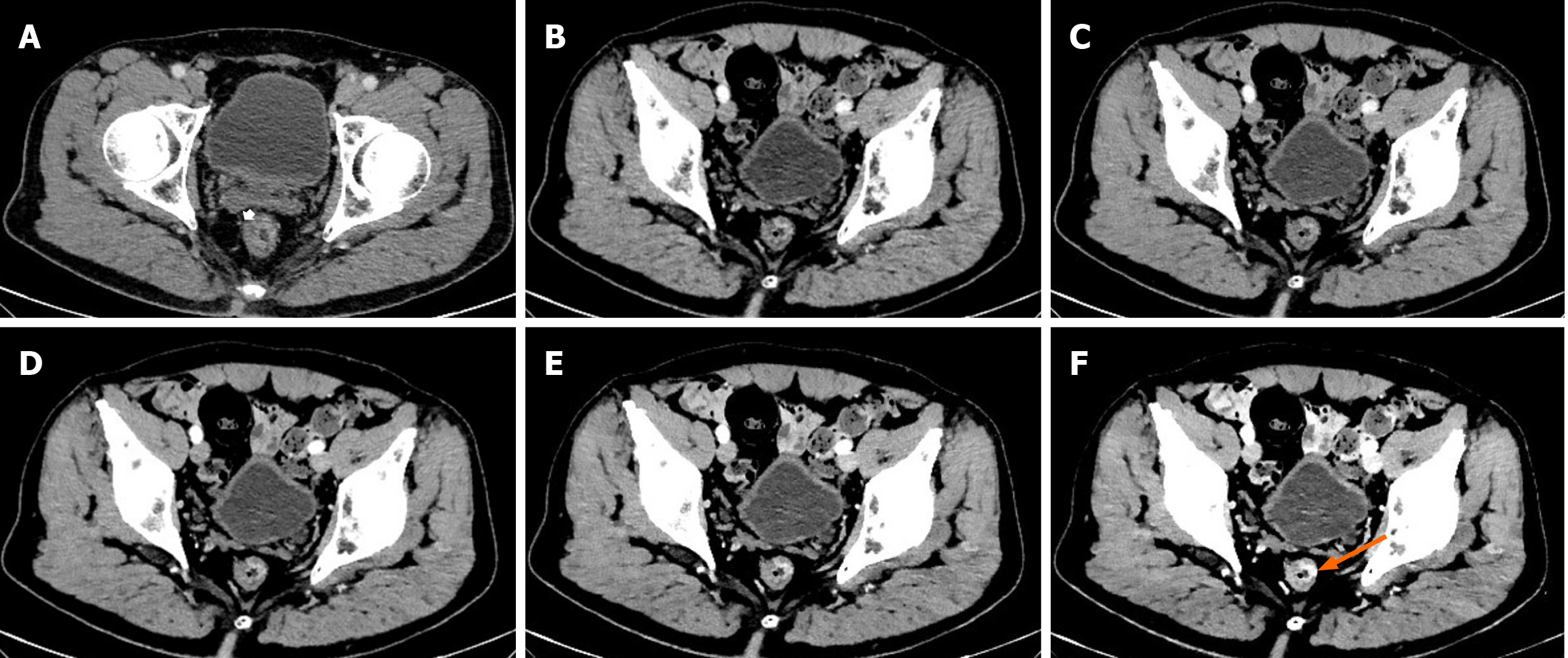Copyright
©The Author(s) 2025.
World J Gastroenterol. Aug 28, 2025; 31(32): 110573
Published online Aug 28, 2025. doi: 10.3748/wjg.v31.i32.110573
Published online Aug 28, 2025. doi: 10.3748/wjg.v31.i32.110573
Figure 1 Computed tomography staging criteria.
A: A 73-year-old male patient with histological stage T1 tumor. The 40 keV oblique axial (OA) virtual monoenergetic image in venous phase showed a sigmoid colon mucosal mass (white arrow) surrounding 1/3 of the lumen with clearly visible normal bowel wall muscularis propria appearing (orange arrow) with relatively low density and without peritumoral fat stranding (PFS) indicative of T1 stage disease; B: A 53-year-old female patient with histological stage T2 tumor. The 40 keV OA virtual monoenergetic image in venous phase showed an upper rectal tumor (orange arrow) surrounding 2/3 of the lumen with a smooth outer border of thickened rectal wall and without PFS indicative of T2 stage disease; C: A 65-year-old male patient with histological stage T3 tumor. The 40 keV OA virtual monoenergetic image in venous phase demonstrated a sigmoid colon tumor with an irregular border and (orange arrow) spiculations extending into the peri-rectal fat, along with PFS sign (white arrow) - findings indicative of stage T3 disease; D: A 63-year-old male patient with histological stage T4 tumor. The 40 keV OA virtual monoenergetic image in venous phase demonstrated a tumor at the hepatic flexure surrounding the entire lumen (white arrow) with infiltration into peritumoral fat and invasion of adjacent liver (orange arrow) indicative of T4 stage disease.
Figure 2
Patient recruitment flowchart.
Figure 3 T-staging in axial polyenergetic image, oblique axial polyenergetic image, and 40-70 keV oblique axial virtual monoenergetic images for T3 stage by pathology.
An upper rectal cancer patient with axial polyenergetic image (PEI), oblique axial (OA) PEI, and 40-70 keV oblique virtual monoenergetic images (VMIs), was proved to be T3 by pathology. A: Axial PEI showed a smooth outer border of the thickened rectal wall without peritumoral fat stranding (PFS), suggesting stage T2; B-F: Oblique PEI (B) and 70-40 keV OA VMIs (C-F) demonstrated a smooth outer border of the thickened rectal wall with spiculation extending into the perirectal fat (orange arrow) but without PFS, suggesting stage T3. Compared to axial PEI (A), the lesion was better visualized at 40-50 keV due to increased lesion attenuation and hyper-enhancement at the anterior rectal wall. Among all images, the 40-50 keV OA VMIs (E and F) performed best.
Figure 4 T-staging in axial polyenergetic image, oblique axial polyenergetic image and 40-70 keV oblique axial virtual monoenergetic images for T2 stage by pathology.
A middle rectal cancer patient with axial polyenergetic image (PEI), oblique PEI and 40-70 keV oblique axial (OA) virtual monoenergetic images (VMIs), was proved to be T2 by pathology. A: Axial PEI showed a smooth outer border of the thickened rectal wall with peritumoral fat stranding (PFS; white arrow), suggesting stage T3; B-F: Oblique PEI (B) and 70-40 keV OA VMIs (C-F) demonstrated the lesion located in the left anterior wall (orange arrow) of the rectal wall and the outer border of the thickened rectal wall was smooth. No spiculations extending into the perirectal fat and PFS was found, suggesting stage T2. Compared to axial PEI (A), the lesion was better visualized at 40-50 keV VMIs due to increased lesion attenuation and hyper-enhancement. Among all images, the 40-50 keV OA VMIs (E and F) performed best.
- Citation: Chen FX, Jiang KK, Zhu JF, Wang MR, Fan XL, Yang JS, He BS. Diagnostic accuracy of dual-layer spectral computed tomography virtual monoenergetic imaging with multiplanar reformation for T-staging of colorectal cancer. World J Gastroenterol 2025; 31(32): 110573
- URL: https://www.wjgnet.com/1007-9327/full/v31/i32/110573.htm
- DOI: https://dx.doi.org/10.3748/wjg.v31.i32.110573
















